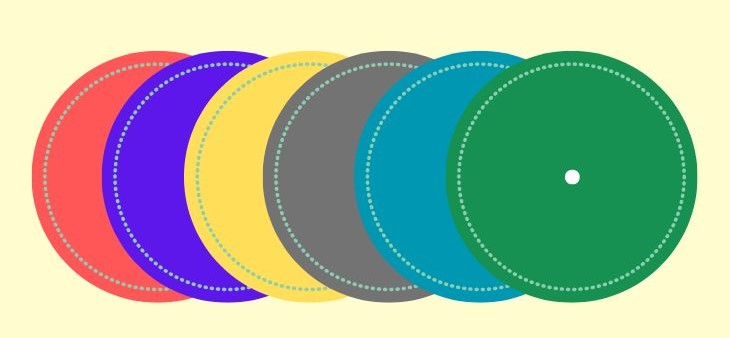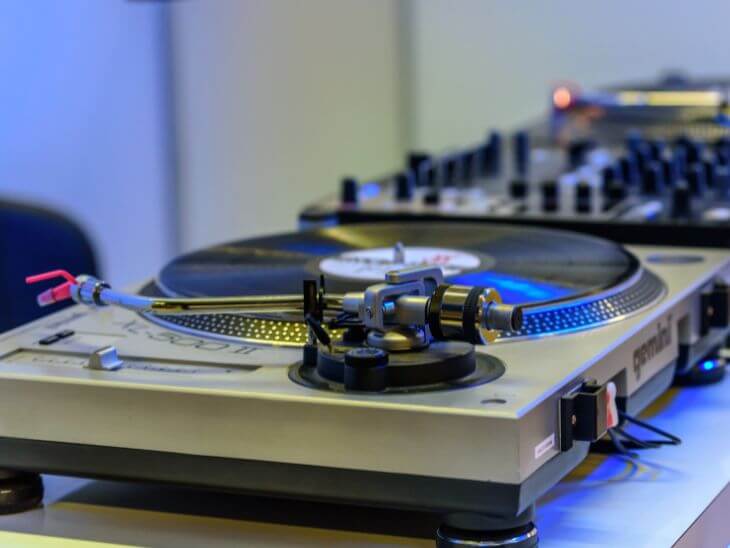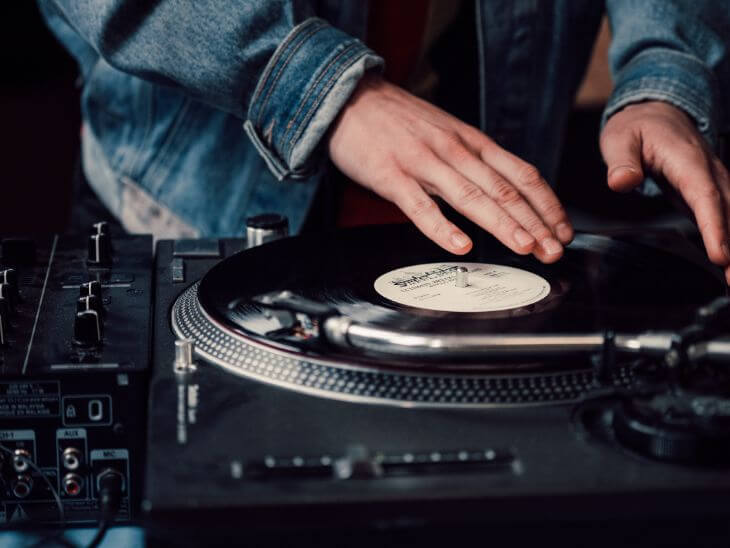Vinyl Slipmats: Do you need one for Turntables?
Hey, there vinyl folks! More often you come across a term mats in the vinyl world, so there are vinyl (or turntable) slipmats and platter mats. They are sometimes used interchangeably but they are not the same thing, each serves a different purpose. The one is common among DJs and the other is familiar among audiophiles. The mats are the important accessory in any record player setup.
In this article, we will explore vinyl slipmats, their purpose, use cases, drawbacks, and whether they are required for your record player or not.

What is a Vinyl Slipmat?
A vinyl record slipmat is a widely used accessory, mostly in DJ setups. It is a circular disk-like mat made up of a fabric known as ‘Felt’ of the same size as a turntable platter. Its primary purpose is to act as a cushion between the platter and a vinyl record, reducing friction between the two. They are also known as turntable slipmats.
It is designed to allow the record to slip on the surface of a moving platter, making it easy for DJs to do some transitions like scratching where the record is moved back and forth while the platter underneath keeps spinning.

In comparison, the platter mats are designed in such a way that records do not slip during playback and they are made up of materials like rubber, cork, etc.
Why is Slipmat used?
The vinyl slipmats are used for various purposes like decoration, protecting records from damage and others. You can use these in the following ways:
- Aesthetic Appeal and Personalization: Slipmats gives a customizable aesthetic touch when your turntable is not in use. This lets you personalize the design, aligning the look with your taste and musical theme. You can style your turntable with a variety of designs including your favorite band logos and artwork. They are easily available online.
- Protection from Scratching: Direct contact between the record and the platter can cause scratches, especially during DJ transitions. The slipmat acts as a cushion, preventing the record from rubbing against the rotating platter.
- Preventing Damage to the Platter: Techniques like cueing or scratching involve applying force to the record. Without a slipmat, too little force won’t stop the record at the right time, and excessive force can stop the rotating platter, which can damage the turntable. The slipmat ensures the record can smoothly slide on the platter during these maneuvers. Apart from this, it also protects the turntable from dust when you are not using it.

Do we need a Slipmat for Record Players?
No, it is not necessary if you are just going to listen to music from record players. Slipmats are primarily designed for DJs who experiment with many musical transitions. If you just like to listen to and appreciate music, the platter mat is a more suitable option, offering better support for vinyl playback. However, you can use the slipmats as a decorative piece of art that stays on the platter of the turntable when you’re not playing.
How to use Turntable Slipmats?
Step 1: Clean the Turntable Platter
First, remove any other mat if present and clean the platter deck with a microfiber cloth or with some mild cleaning solution if it is too dirty. Note that a very dirty platter can increase friction between the platter and the slipmat.
Step 2: Setting the Slipmat
Next, install the clean slipmat on the surface of the platter aligning the center of the mat over the spindle. Optionally, you can insert a wax paper of similar size beneath the slipmat to further reduce friction.
Step 3. Play the Record
Lastly, just play the record and check if all the transitions can be executed seamlessly.
How do DJs use Slipmats?
The turntable slipmats are an important tool that DJs use to execute the following transitions:
- Beat-matching: This is done to match the beat of two different songs to provide a seamless musical experience. It involves listening to the beats of two songs, adjusting the tempo of one to match the other, syncing beats with correct timing, and smoothly transitioning between the tracks.
- Slip-cueing: In this technique, the transition is performed by holding the record while the platter still rotates underneath and releasing it at the correct time matching the speed of the rotation.
- Scratching: Here, a record is slipped back and forth on the slipmat without obstructing the rotating platter below to get the scratching effect.

All these transitions are about timing to maintain the flow of the music.
Drawbacks of Slipmats
- Dust Magnet: They are famous for being a dust magnets. They accumulate dust from one record, transferring it to the next one whenever played on the same slipmat.
- Do not isolate the vibrations: They do not dampen vibrations from reaching the stylus. These are not suitable if you are an audiophile and enjoy listening to music in its purest form.
- Less Friction: While advantageous for DJs, but they also causes records to slip which can disturb the regular listening experience, resulting in uneven playback and record skipping.
Conclusion
That is all about, what is a vinyl slipmat. It is not a very expensive but necessary piece of accessory for so many reasons as discussed in the article.
If you are just starting, any slipmat can work and with time you personalize the material and design according to your genre.
FAQ
Yes, mats are essential accessories for proper operation of the turntable and care of records. There are two types of mats available in the market, each serving a different purpose:
For DJ:-Vinyl Slipmats
For others:- Platter Mat
Felt slipmats on turntables serve two main purposes. First, they help hold vinyl records at the right height for the playback. Second, they protect records from damage, especially when the turntable platter is made of metal.
Platter mats often made of rubber or cork are suitable for regular music listeners, which prevents the record from slipping on the turntables, ensuring stable and consistent playback. Also, they helps in dampening the vibrations coming from the motor.
In contrast, vinyl slipmats usually made of felt and synthetic materials, allows the record to slip on the rotating platter which helps DJs to perform techniques like scratching and beat-matching. But, they did not help much in absorbing the extra noise.